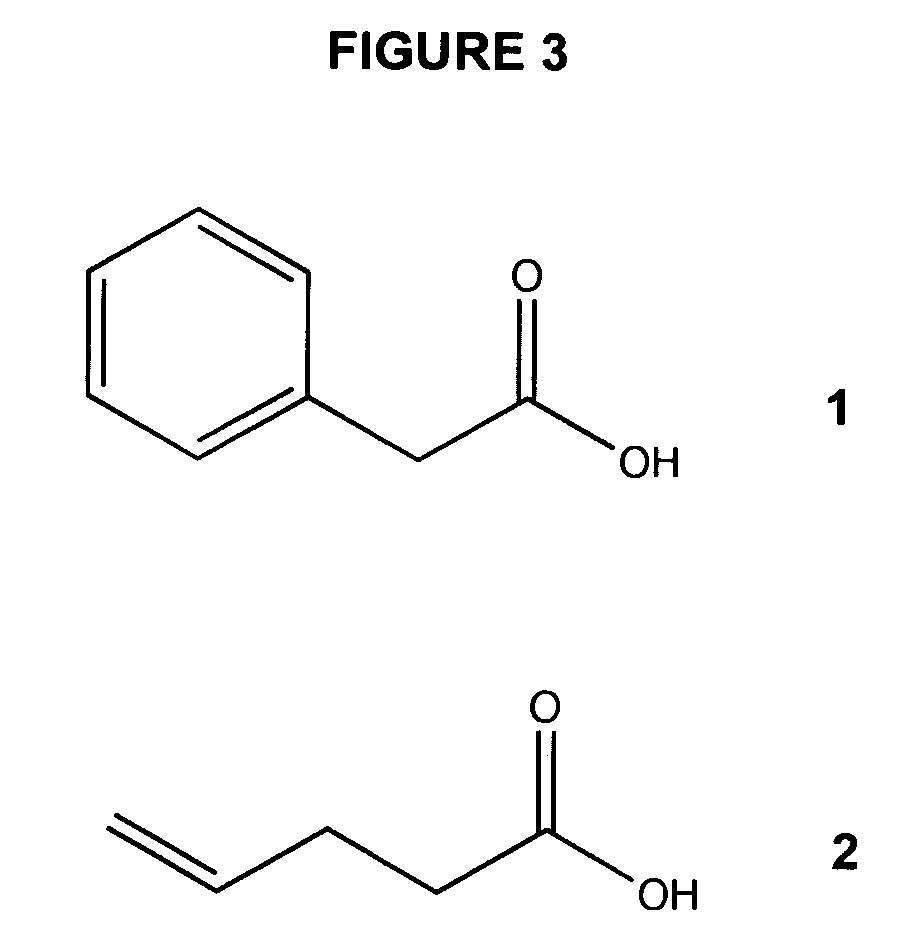Methods for determining protein binding specificity using peptide libraries
a technology of protein binding specificity and peptides, applied in the field of methods for determining protein binding specificity using peptide libraries, can solve the problems of inability to conduct systematic inquiry, inability to determine the actual sequence of individual peptides, and uncertainty of the usefulness of protein deacetylases
- Summary
- Abstract
- Description
- Claims
- Application Information
AI Technical Summary
Benefits of technology
Problems solved by technology
Method used
Image
Examples
example 1
Use of a One-Bead-One-Compound Peptide Library to Identify Deacetylase Specificity
General
[0069] All amino acid derivatives and resins were purchased from Peptides International (Louisville, Ky.) or from Bachem (Bubendorf, Switzerland). Peptides used in the solution deacetylase assays were obtained from the University of Wisconsin-Madison Biotechnology Core Facility. Other chemical reagents were obtained from Sigma-Aldrich (St. Louis, Mo.), Acros (Geel, Belgium), Novabiochem (San Diego, Calif.), Amersham Biosciences (Buckinghampshire, England), or Quantum Dot (Hayward, Calif.). Reaction vessels for peptide library synthesis were purchased from Alltech Chromatography (Deerfield, Ill.).
[0070] Analytical gradient HPLC was conducted on a Shimadzu series 2010C HPLC with a Vydac C18 column (10 μm, 4.6×250 mm). All runs used linear gradients of 0.05% aqueous TFA and 0.02% TFA in acetonitrile. MALDI-TOF MS was performed on a Bruker REFLEX II using α-cyano-4-hydroxy-cinnamic acid as matri...
example 2
Use of a Combinatorial Library to Identify Histone-Specific Protein Binding
General
[0104] An OBOC histone H4 N-terminal tail combinatorial library was constructed to identify the binding preferences of the antibody toward all known possible histone modification states. The H4 histone tail library was comprised of the sequence corresponding to the first 21 amino acids of human histone H4 attached to a linker composed of 2 β-alanines (B) and a methionine (M). The library included 800 unique peptide sequences, representing all known modification states for the first 21 amino acids of histone H4 in addition to all possible methylation states at lysines and arginines that are known to be methylated. Using an α-phos (S1) H4 antibody as a primary antibody, the library was screened to determine histone H4 N-terminal sequences to which the primary antibody specifically bound.
[0105] Amino acid derivatives and resins were purchased from Peptides International (Louisville, Ky.), Novabiochem ...
PUM
 Login to View More
Login to View More Abstract
Description
Claims
Application Information
 Login to View More
Login to View More - R&D
- Intellectual Property
- Life Sciences
- Materials
- Tech Scout
- Unparalleled Data Quality
- Higher Quality Content
- 60% Fewer Hallucinations
Browse by: Latest US Patents, China's latest patents, Technical Efficacy Thesaurus, Application Domain, Technology Topic, Popular Technical Reports.
© 2025 PatSnap. All rights reserved.Legal|Privacy policy|Modern Slavery Act Transparency Statement|Sitemap|About US| Contact US: help@patsnap.com



